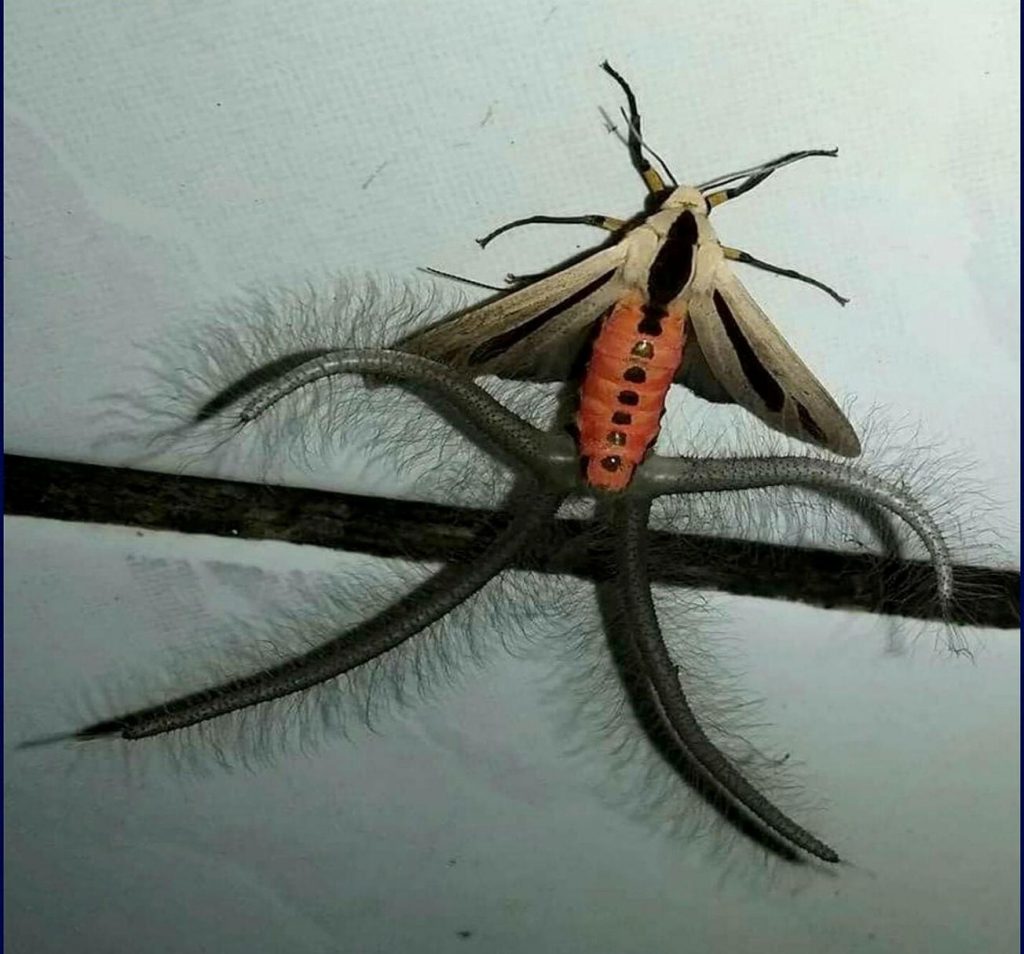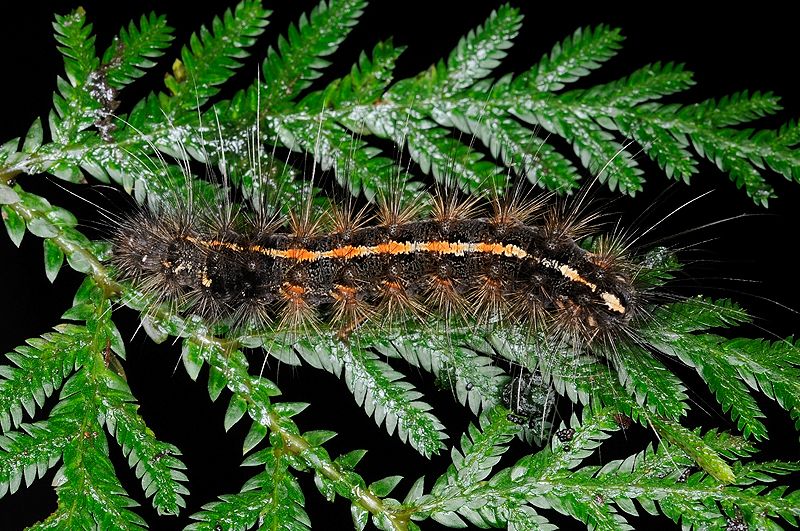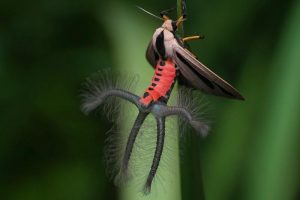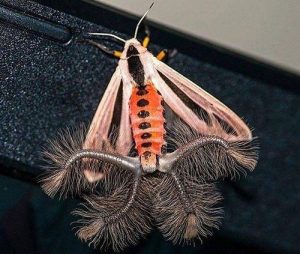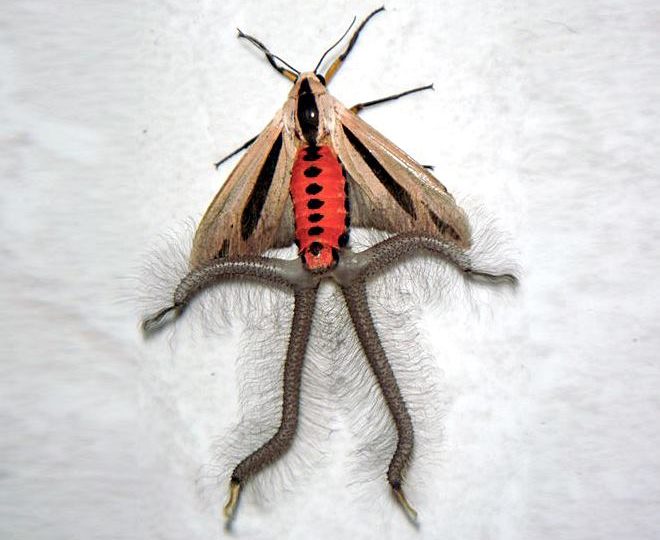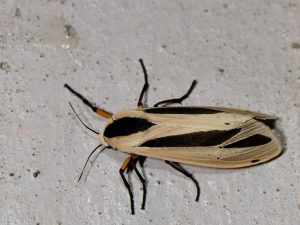Creatonotos gangis
Creatonotos gangis moth of the Arctine family is native to Australia and Southeast Asia. Swedish botanist Carl Linnaeus described it first in 1763 in his book Centuria Insectorum.
i.redd.it
Scientific Classification
- Family: Erebidae
- Genus: Creatonotos
- Scientific Name: Creatonotos Gangis
Description and Identification
Pupa
The larva pupates on dead leaves and remains enclosed within a hairy cocoon.
Adult Moth
Sexual Dimorphism: Present
Color and Appearance: When opened, the forewings appear brown, and the hind wings are white, with all four of them having dark streaks running across. When closed, the appearance does not change though the dark streaks get partially visible.
Their abdomen that is red, and sometimes even yellow is bigger and rounder in males.
Average wingspan: 4 cm
Flight pattern: Consistent
Season: Not recorded
Eggs
The eggs are round and yellow, laid in rows on the leaves of host plants.
Quick Facts
| Distribution | South East (India, Indonesia, Sri Lanka, Iran, Thailand, China, Japan); Australia (Queensland, New Guinea, Northern Territory, and Mackay) |
| Habitat | Mostly near their host plants; the larvae dwell near pomegranate trees |
| Predators | Bats, and birds |
| Lifespan of adults | 5 – 7 days |
| Host plants / Larva food | Pennisetum americanum, lucerne crops, coffee, rice, sweet potato, sorghum, ragi, sweet potato, groundnuts |
| Adult diet | Mainly the nectar of host plants |
Did You Know
- The males of this species often appear big and inflated mostly due to their scent organs, often exceeding the size of their abdomens.
- The Cretanotos gangis’ caterpillar ingests toxic plants containing alkaloid chemicals that help in the growth of their scent glands, but, they are not considered harmful.
Scientific Classification
- Family: Erebidae
- Genus: Creatonotos
- Scientific Name: Creatonotos Gangis

